Hacking Dog Wear with AI What Worked What Failed and Why You Matter More Than Ever

What happens when AI designs dog wear? A real-life experiment reveals what worked, what failed, and why design skills still matter most.
Prefer to soak things in while walking the dog or sewing your next project?
This post is based on Episode 14 of the Thank Dog We Made It podcast, where I share what happened when I asked AI to help redesign a dog coat—and what the experiment taught me about creative control, clear communication, and why your design instincts still matter most.
🎧 Listen to the episode + view show notes here
Can AI Help Design Dog Wear? Here’s What Actually Happened When I Asked
There’s been a lot of talk lately about AI taking over the creative side of fashion. As someone who designs dog wear—and teaches others how to do the same—I couldn’t help but wonder: could AI actually support the process of creating real, functional garments for dogs?
So I gave it a try.
I wasn’t setting out to prove anything. I was honestly curious. But I’ll be honest—there was also a bit of unease. There’s been this growing feeling that maybe, just maybe, AI could eventually do what we do. Replace the designer. Automate the ideas.
What I found was the opposite.
Starting Simple: A Prompt and a Pattern
I started with a basic prompt. I asked ChatGPT—my AI assistant, which I call Stitch—to generate ideas for a cute dog coat. I gave it the Cozy Coat base pattern to work from, and a few photos for reference.
This was the first image it gave me:
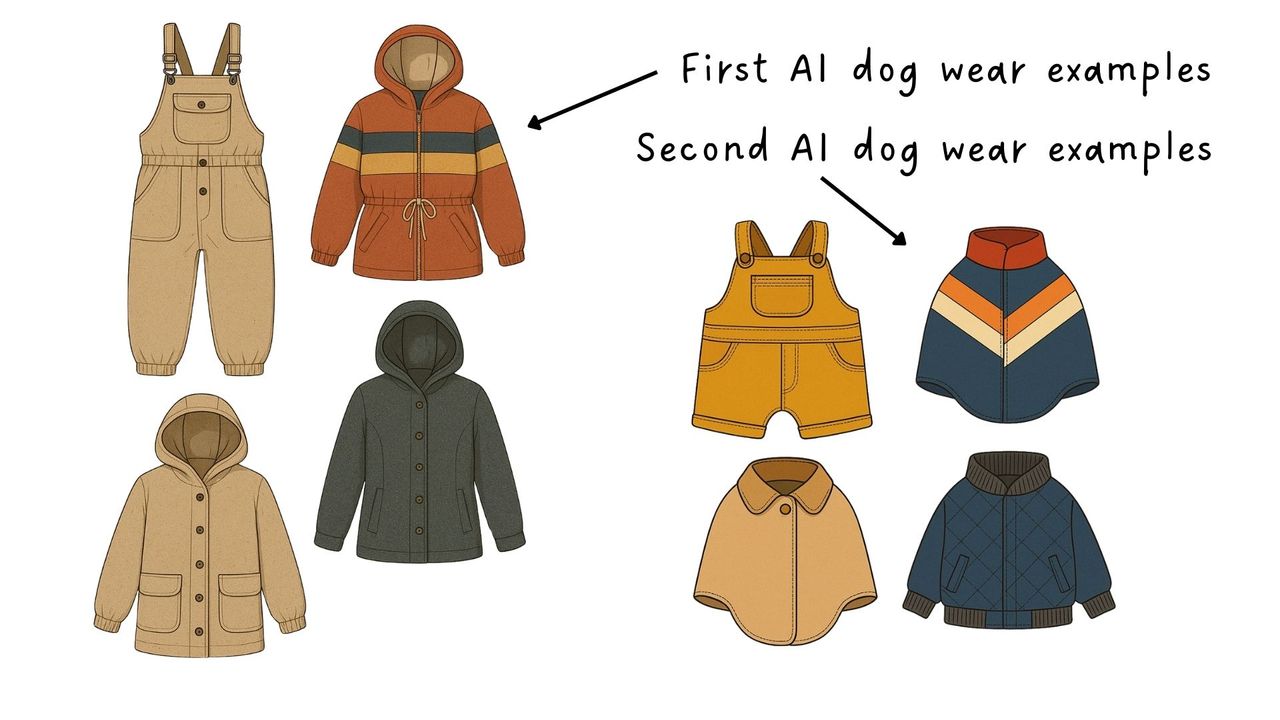
It looked like a coat for a toddler. Cute? Maybe. Useful for dogs? Not even close. There were sleeves, chest panels, and all kinds of assumptions built around the human body.
This is when I realized: AI doesn’t know how dogs move.
Giving More Direction Still Didn’t Help
I thought maybe I hadn’t been specific enough. So I gave Stitch more. I explained that the Cozy Coat doesn’t have armholes, that it wraps around the neck and belly, and that the fit needs to allow full range of motion.
Here’s what came back:
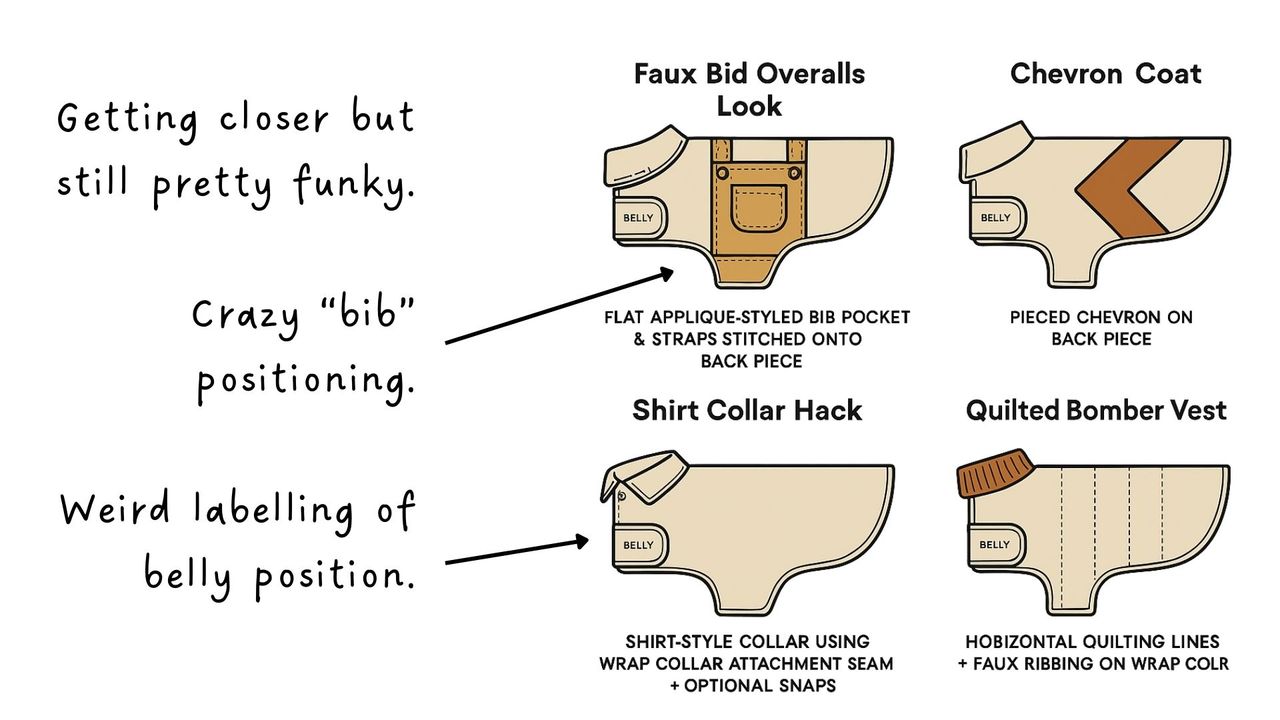
Still not great. The silhouettes were starting to shift, but nothing aligned with how the actual pattern worked. The belly band was missing. There were random seams that would never function in real construction. And still—everything looked vaguely human.
What Finally Moved Things Forward: Sketches
That’s when I stopped trying to make AI figure it out on its own. I went back to what I knew worked: sketching.
I drew out what I was thinking. I labelled the parts. I showed how the closure worked, where the belly band landed, and what details mattered for fit and movement. I gave those sketches to Stitch.
Here’s one of the comparisons:
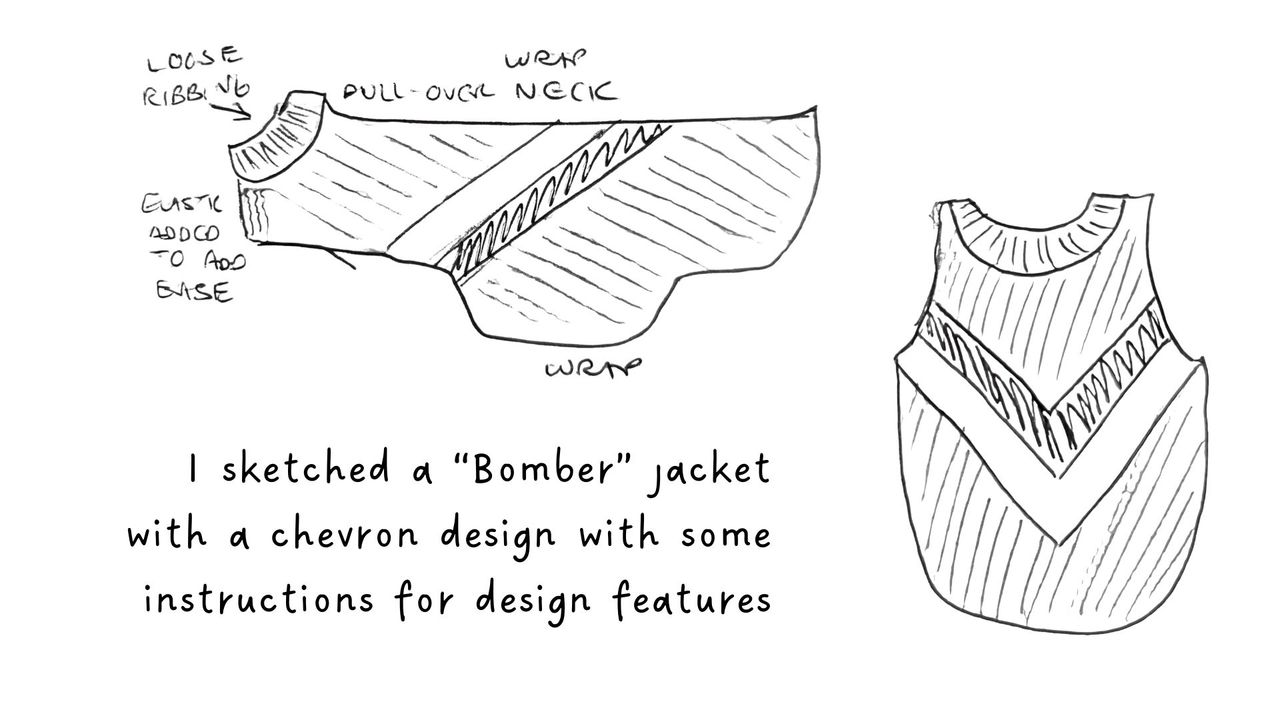
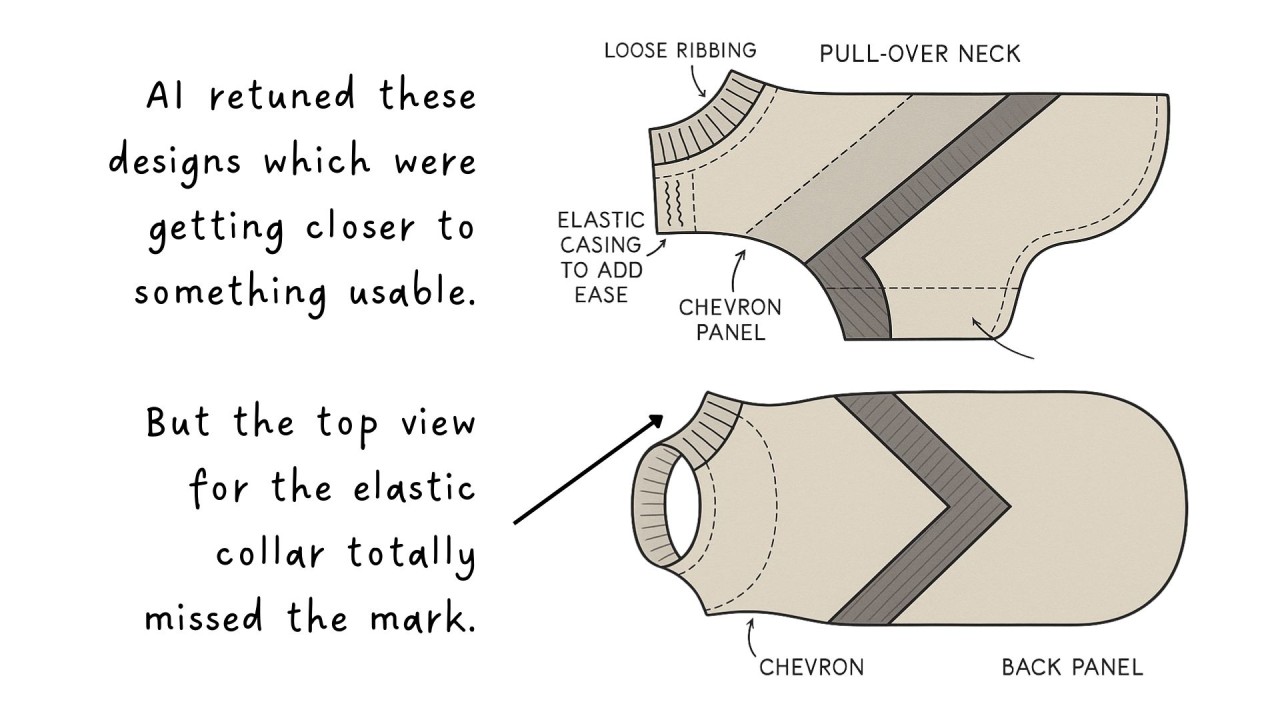
I had to repeat the process multiple times. Draw. Explain. Reframe. Give visual references. And slowly, Stitch started producing versions that were a little more grounded.
It Took Repetition and Reframing
It still wasn’t perfect. I gave Stitch a rough sketch for some Carhartt inspired overalls.
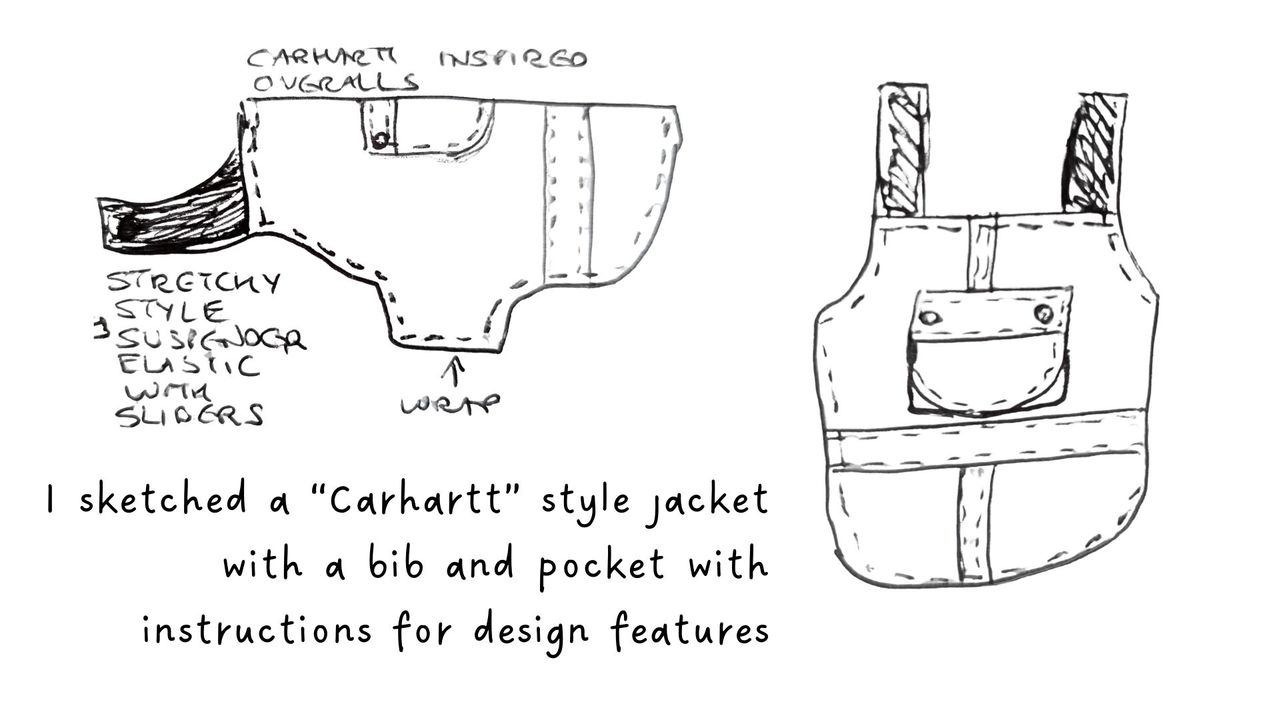
The “Faux Bib Overalls” design, added a decorative chest panel right where a dog’s forelegs move. And the straps made zero sense functionally. But this time, at least the shape was in the ballpark.
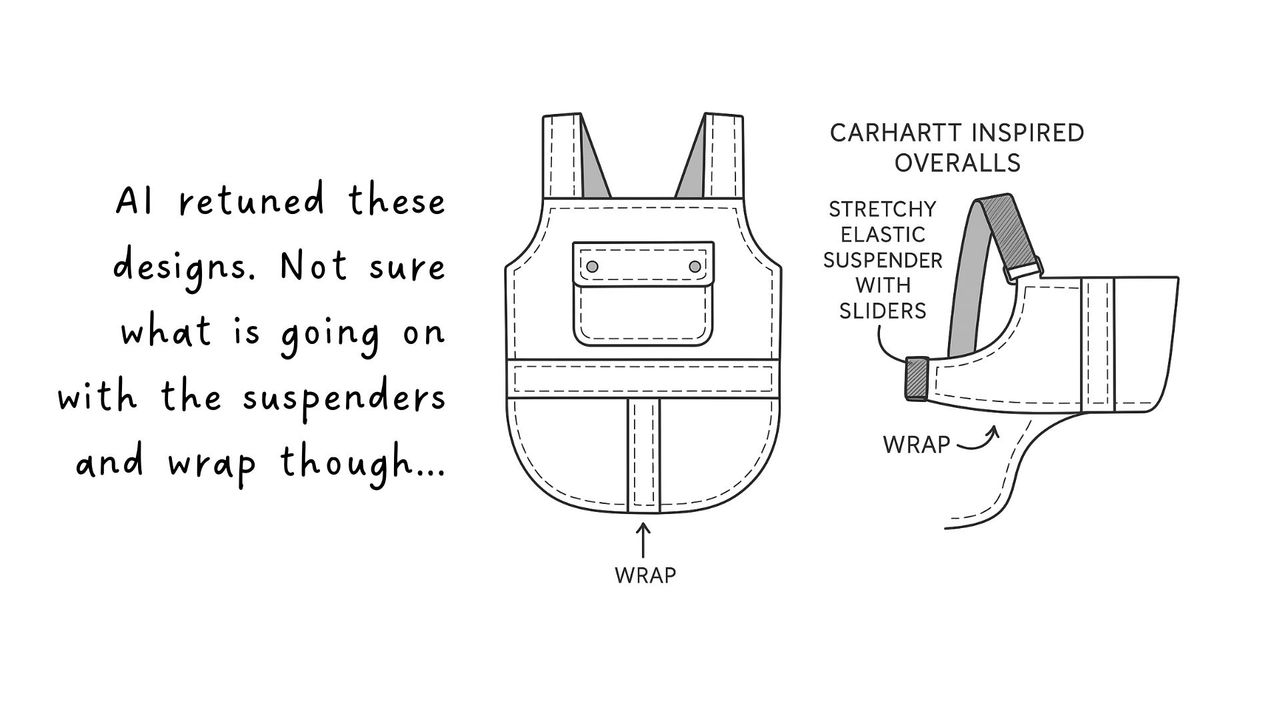
I had to repeat the process multiple times. Draw. Explain. Reframe. Give visual references. And slowly, Stitch started producing versions that were a little more grounded.
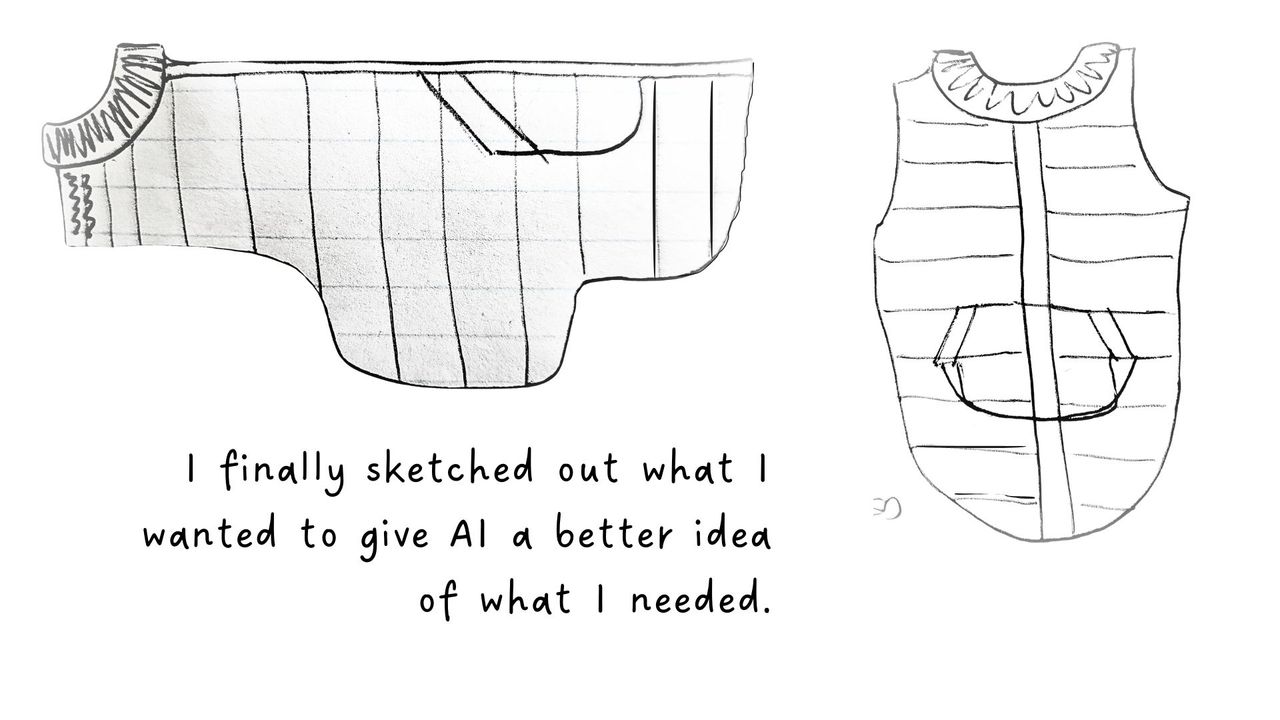
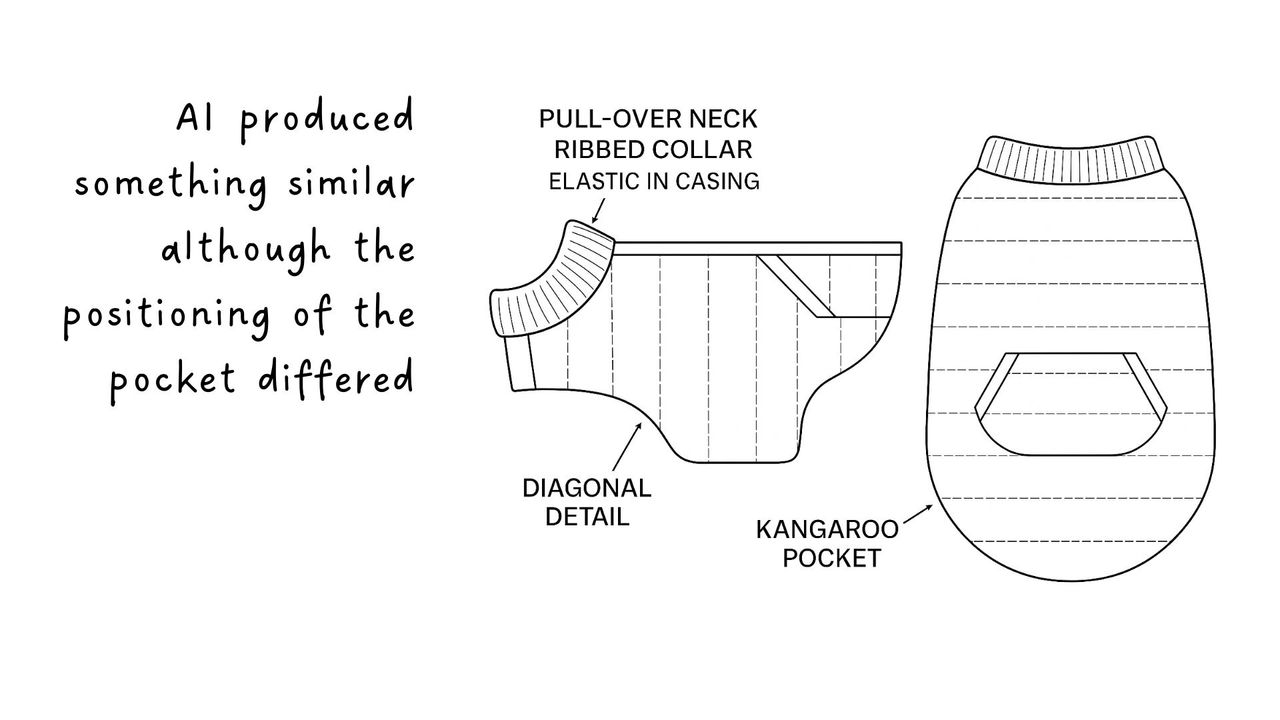
Still, I noticed that any time I left out a detail—or even hinted at something slightly human—Stitch would revert back. Collars that choked. Closures that wrapped the wrong direction. Pockets placed on the side, not the back.
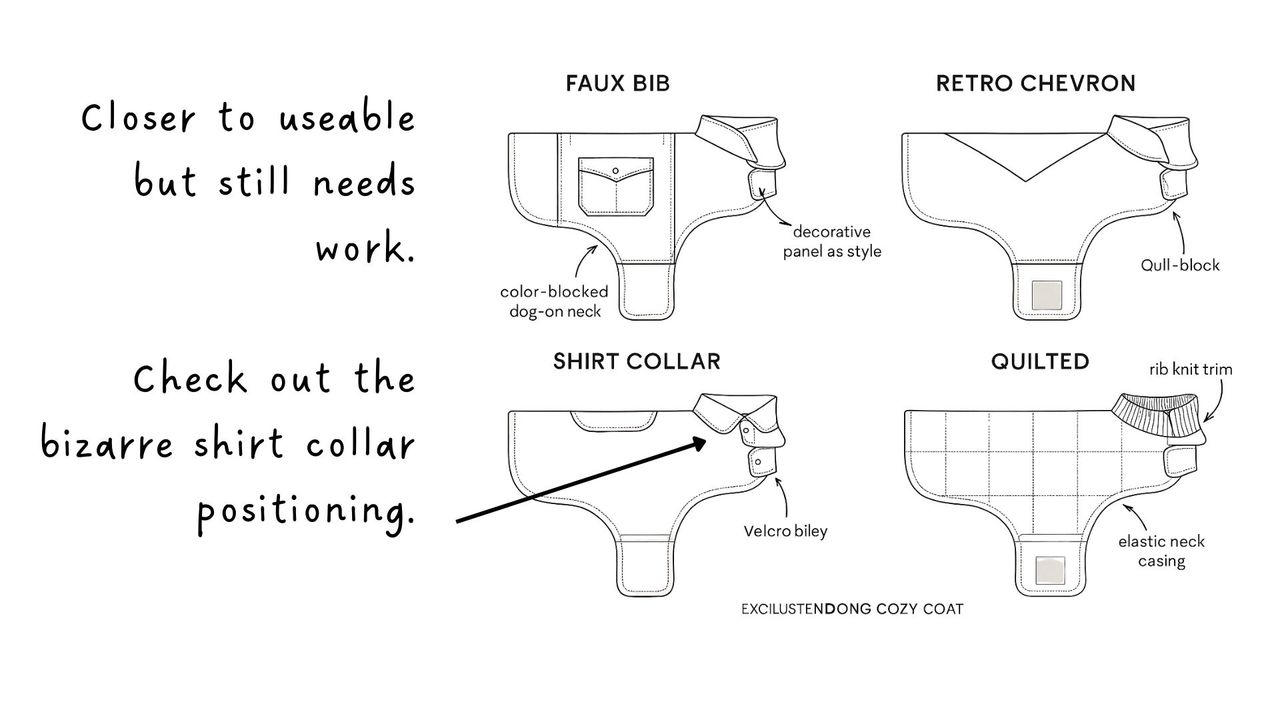
That was the moment I really understood: AI only learns what you teach it.
Where Stitch Was Actually Helpful
Eventually, once Stitch had a better idea of what I meant, it started giving me some versions that were actually helpful. Not for construction—but for creative direction.
I used those to spark new sketches. Ideas I wouldn’t have thought of on my own started taking shape, but only because I had put in the work to guide the tool.
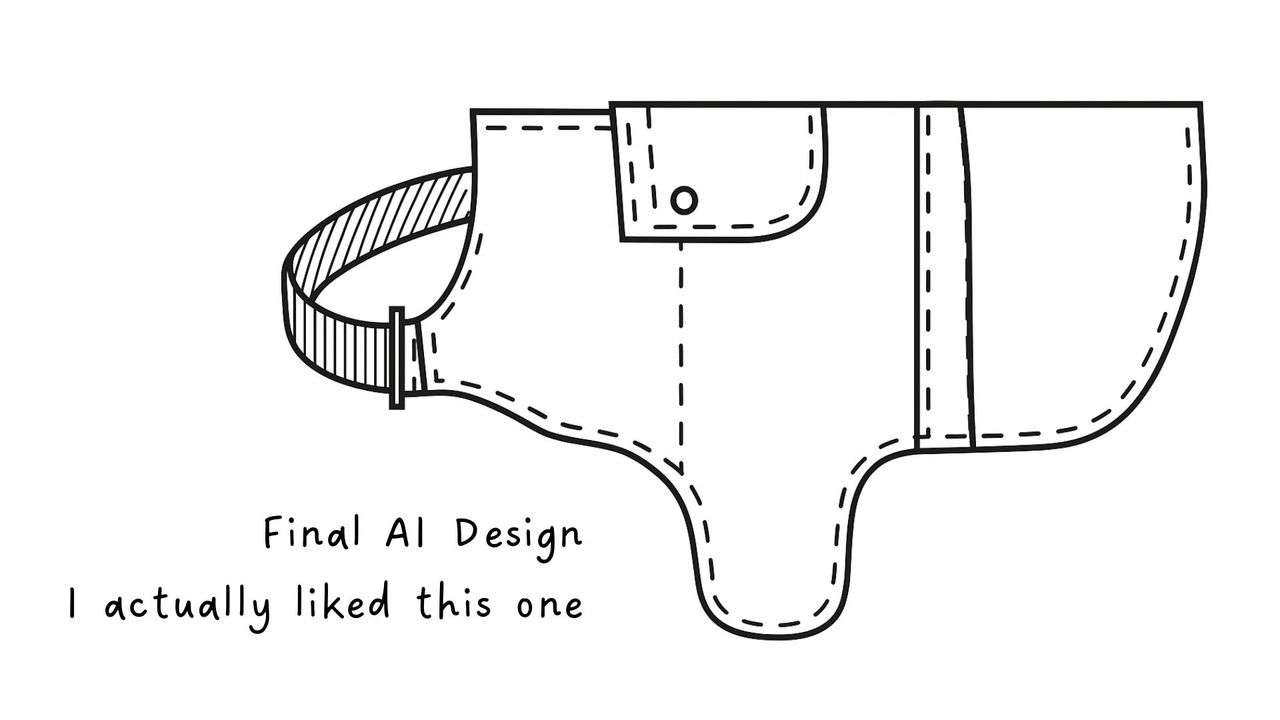
What This Means if You’re Just Starting
If you're new to dog wear design, don’t let this scare you off.
This wasn’t about being tech-savvy or learning to code. It was about understanding design enough to teach the tool what matters.
And that starts with measuring and sketching. That’s the real work. AI can’t do that for you.
If you’re ready to explore design more deeply, I’ll be covering some of this in my upcoming Hack Your Pattern course. The course isn’t about AI—it’s about building design confidence. But I will show you how AI can fit into your process if that’s a direction you want to explore.
Want to Try This Yourself?
You don’t need to start with AI. You just need something to sketch on and a way to measure real dogs.
Here’s what I recommend:
-
Dog Coat Sketch Templates (Free) – helps you visualize and explore ideas
-
4-Step Measuring Workbook (Free) – shows you how to measure and fit your ideas to real dogs
Use them to take that first step. That’s all design really is—one sketch, one measurement, one idea at a time.
Designing for dogs isn’t about getting it perfect the first time—or having the flashiest tools. It’s about understanding fit, function, and how dogs actually move. Tools like AI can offer inspiration, but they don’t come trained on dog wear. They’re built around human fashion—human silhouettes, proportions, and patterns.
That’s why even the clearest prompt often leads to results that don’t work for dogs. The logic just isn’t there yet. But your understanding—the way you sketch, test, and adapt—is.
So whether you’re just beginning to sew or dreaming up your first design, know this: you don’t have to master AI to become a designer. You just need to start. One sketch, one measurement, one decision at a time.
And if you're ready for more structure, support, and confidence-building, I'll be covering this whole process—and more—inside my upcoming Hack Your Pattern course. I’ll show you how to think like a designer, develop your ideas, and build patterns that actually work for dogs. No credentials needed. Just curiosity and a willingness to try.
Categories: : Blog, Pattern Making, Sewing
Ready to create dog wear that fits like a dream?
Grab my free 10-Step Measuring Workbook and Video Guide to start designing better-fitting patterns today.
Join My Mailing List
Sign up to be the first to know about exclusive offers, free tutorials, and new product updates.
I have read and agree to the terms & conditions.

 Jill Bartlett
Jill Bartlett 
